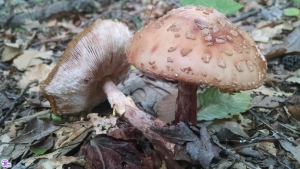#021: Pleurotus ostreatus, The Oyster Mushroom [Archived]
Note: This is an archived post. Read the current version of this post here. The oyster mushroom is one of the few species of mushroom that you can routinely find at a grocery store. This is due to the fact that it is saprobic (it degrades dead plant material) and is easy to cultivate across a range of substrates. P. ostreatus will decompose pretty much anything with cellulose: from logs to sawdust to straw to toilet paper. Oyster mushrooms are often sold in grow-at-home mushroom kits, usually with a substrate like sawdust. In nature they are usually found on logs or standing dead trees. Occasionally you will find them growing terrestrially from buried wood. The Oyster prefers hardwoods, but can also be found on conifers. The name “Oyster Mushroom” refers to their shape and color, rather than taste. The fruiting bodies are semicircular to shell-shaped or fan-shaped, with a short or...

![#021: Pleurotus ostreatus, The Oyster Mushroom [Archived]](https://www.fungusfactfriday.com/wp-content/themes/hueman/assets/front/img/thumb-medium-empty.png)





![#011: Characteristics of Kingdom Fungi [Archived]](https://www.fungusfactfriday.com/wp-content/themes/hueman/assets/front/img/thumb-small-empty.png)

